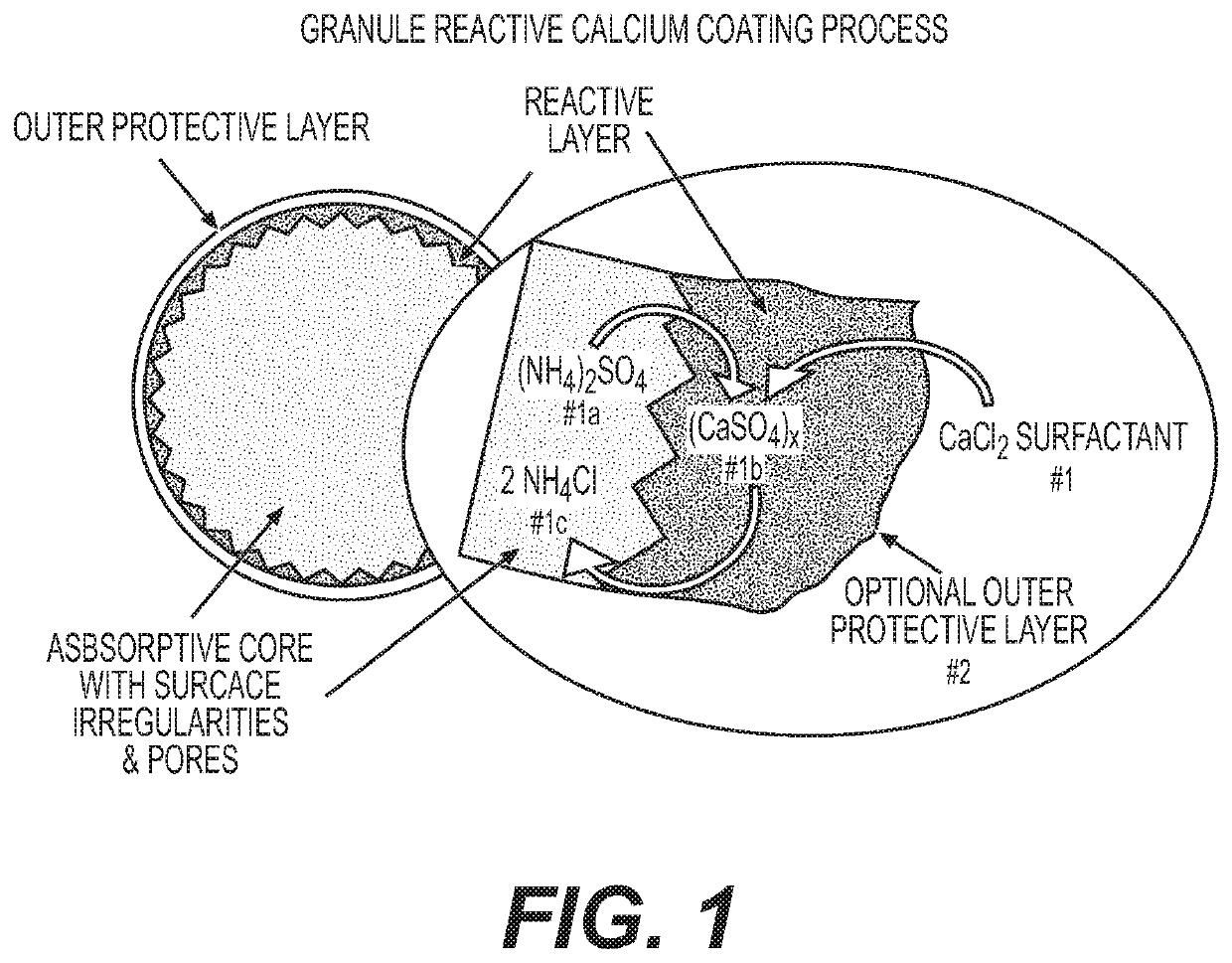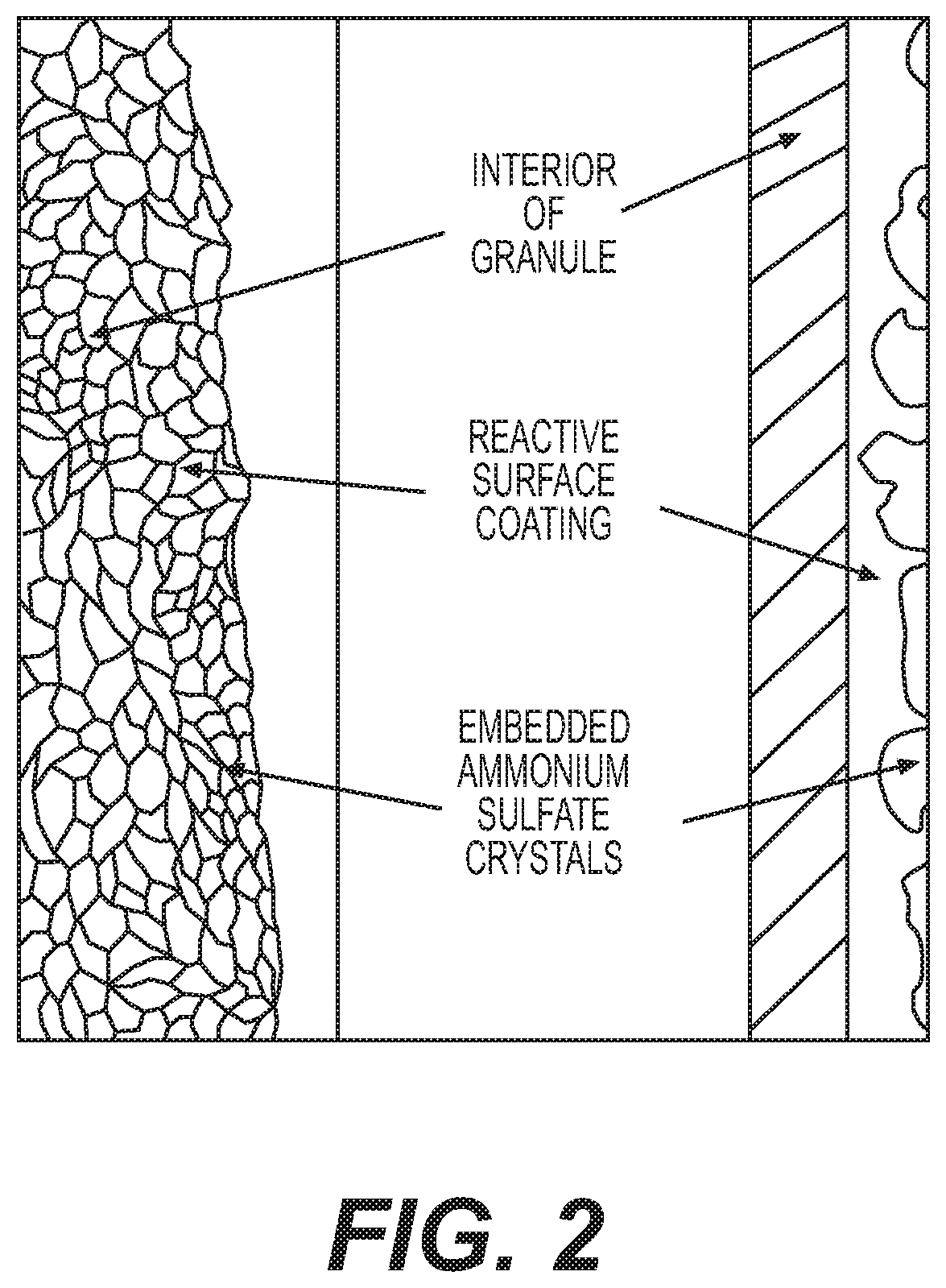Reactive inorganic coatings for agricultural fertilizers
a technology of inorganic coating and fertilizer, which is applied in the direction of nitrogenous fertilisers, bioloigcal waste fertilisers, products, etc., can solve the problems of exacerbated storage, prone to degradation, and light oil coatings that do not protect well in the long term, and achieve effective micro-surface coatings.
- Summary
- Abstract
- Description
- Claims
- Application Information
AI Technical Summary
Benefits of technology
Problems solved by technology
Method used
Image
Examples
example 1
[0036]To exemplify this disclosure, wet community waste organics comprised of digested food waste and manures (also referred to generally as biosolids or organic materials) are received at a fertilizer manufacturing facility with a percent solids of about 17.0 percent. The plant is set up to operate at an organics processing rate of 220 wet tons per day. In this example, the material is mixed with previously dried organic materials to yield a preferred percent solids of about 20% to 26%, or more preferably about 22% to 24% solids. This conditioned organics mix is pumped into the first vessel for hydrolysis. At the orifice of the first vessel, the conditioned organic mix is further mixed with 93% sulfuric acid in an amount pre-calculated to yield a degree of heat of hydration of about 110° C. (230° F.) and a total of about 17% sulfur in the finished fertilizer. The contents of the vessel are mixed vigorously at a rate of 360 RPM for between about 30 seconds and ten minutes or, prefer...
example 2
[0041]The conversion of thiosulfate to elemental sulfur is another example of a reactive coating that enhances slow release of sulfur and nitrogen by migration inhibition. It further serves as a base coat that reduces surface area for subsequent placement of a final top seal coat for dust and abrasion control.
[0042]In this example, organic material was processed in accordance with the process of Example 1 through a rotary drum cooling apparatus. At the rotary drum, a different approach was taken to produce a reactive coating for the dry granules. A preferred anion concentration is between 20% and 40% with a more preferred concentration of 30%. A solution of potassium thiosulfate (50% in water) was sprayed on hot (140° F. to 160° F.; 60° C. to 71° C.) granules such that thiosulfate reacted with free hydrogen ions present on granule surfaces as sulfuric acid (see equation below):
(NH4)2S2O3+H2SO→(NH4)2SO4+S(solid)+SO2+H2O
When the acid is phosphoric, the formula is:
(NH4)2S2O3+H3PO4→(NH4...
example 3
[0043]In this example, organic material was processed in accordance with the process of Example 1 through a rotary drum cooling apparatus. At the rotary drum, a different approach was again taken to produce a reactive coating for the dry granules. At the rotary drum coating apparatus, a solution of iron sulfate (in water at a range of 15% to 40% with DBSA in a range of 0.2% to 3% as a surfactant) was sprayed on hot (140° F. to 160° F.; 60° C. to 71° C.) granules such that the iron replaces one of the ammonium groups of the diammonium phosphate that is present on the surface as sulfuric acid on said granules. This reaction results in the deposition of an iron ammonium phosphate coating.
[0044]The use of monohydrate or heptahydrate iron sulfate was used to produce the reactive coating for phosphate based granule. The use of iron sulfate results in the production of a coating of iron (+2)—ferrous ammonium phosphate. This is an insoluble salt found as a water insoluble fraction for both ...
PUM
| Property | Measurement | Unit |
|---|---|---|
| temperatures | aaaaa | aaaaa |
| temperature | aaaaa | aaaaa |
| temperatures | aaaaa | aaaaa |
Abstract
Description
Claims
Application Information
 Login to View More
Login to View More - R&D
- Intellectual Property
- Life Sciences
- Materials
- Tech Scout
- Unparalleled Data Quality
- Higher Quality Content
- 60% Fewer Hallucinations
Browse by: Latest US Patents, China's latest patents, Technical Efficacy Thesaurus, Application Domain, Technology Topic, Popular Technical Reports.
© 2025 PatSnap. All rights reserved.Legal|Privacy policy|Modern Slavery Act Transparency Statement|Sitemap|About US| Contact US: help@patsnap.com



